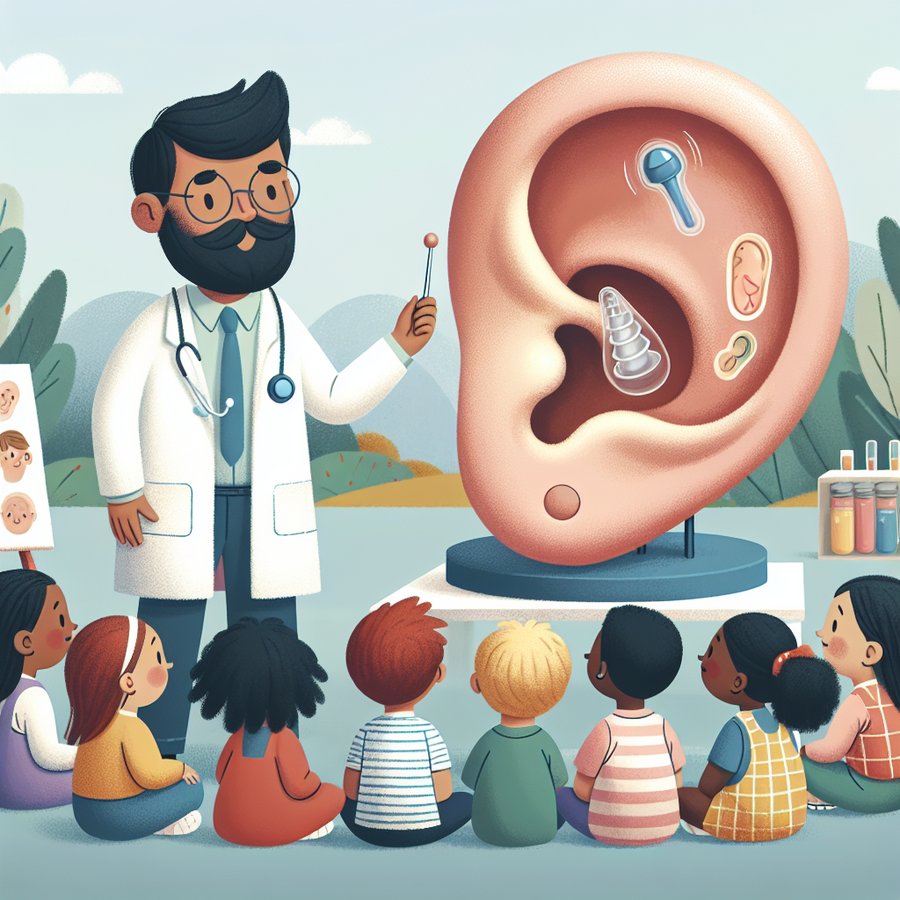Tympanostomy, commonly referred to as ear tubes, is a procedure often mentioned in pediatric care, especially for children who experience frequent ear infections. This comprehensive guide aims to demystify the process, benefits, and considerations of tympanostomy for new parents seeking the best for their little ones. With ear health being crucial for your child’s hearing and overall development, understanding tympanostomy becomes imperative.
What is Tympanostomy (Ear Tubes)?
Tympanostomy involves the surgical insertion of tiny tubes into the eardrum to allow fluid to drain from the middle ear. This procedure is often recommended for children who have persistent fluid buildup, leading to frequent ear infections and hearing issues. The tubes, typically made of plastic or metal, are small and are placed during a short surgical procedure.
The primary reason behind the procedure is to prevent the accumulation of fluid, which can lead to ear infections and affect a child’s hearing ability. By allowing air to enter the middle ear, the risk of future infections is significantly reduced, and any existing hearing loss caused by fluid buildup can be immediately addressed.
When is Tympanostomy (Ear Tubes) Needed?
Not every child with an ear infection will require tympanostomy tubes. Pediatricians recommend this procedure for children who meet specific criteria, such as experiencing four or more ear infections in a year, persistent fluid in the ears for more than three months, or hearing loss caused by the said fluid. It’s crucial for parents to monitor their child’s ear health and consult with their pediatrician if they notice frequent infections or hearing difficulties.
Before deciding on tympanostomy, doctors will evaluate the child’s medical history, the frequency of ear infections, and any related hearing issues. It’s a decision made with careful consideration, aiming to provide the child relief from chronic ear infections and prevent potential hearing loss.
What to Expect During the Tympanostomy (Ear Tubes) Procedure
The tympanostomy procedure is relatively quick, usually taking about 10 to 15 minutes, and is performed under general anesthesia to ensure the child feels no discomfort. During the procedure, a small incision is made in the eardrum, and any fluid present in the middle ear is drained. Then, a tiny tube is inserted into the incision to keep it open and allow air to flow freely.
After the procedure, children can typically go home the same day. It’s normal for there to be a minor discharge from the ear for a few days post-surgery, which is addressed with ear drops or sometimes oral antibiotics. Parents are advised to follow post-operative care instructions closely to ensure a smooth recovery for their child.
Caring for Your Child After Tympanostomy
Post-operative care is crucial for ensuring the ear tubes function correctly and reduce the risk of complications. Parents should keep water out of the ears to prevent infection, which means being cautious during bathing and swimming. Ear plugs or special ear drops may be recommended by your child’s physician to prevent water from entering the ear canal.
It is also important to monitor for signs of infection or complications, such as persistent ear pain, fever, or unusual drainage from the ears. If any of these symptoms occur, it’s critical to contact your pediatrician immediately. Regular follow-up appointments will be necessary to check the position of the tubes and the overall health of the ear.
FAQs on Tympanostomy (Ear Tubes)
Parents often have questions regarding tympanostomy and its implications for their child. Here are some frequently asked questions answered to help alleviate concerns:
- How long do the tubes stay in? Tubes typically stay in place for six to twelve months and usually fall out on their own as the eardrum heals.
- Will my child experience pain? Most children experience little to no pain after the procedure and can resume normal activities the following day.
- Can ear infections still occur with tubes? While ear tubes significantly reduce the risk of middle ear infections, outer ear infections can still occur.
For more detailed information about the tympanostomy procedure and managing ear health, parents can visit HealthyChildren.org.
In conclusion, tympanostomy can be a valuable procedure for children suffering from frequent ear infections and associated hearing loss. By understanding what to expect and how to care for your child post-surgery, you can help ensure a successful outcome and improved quality of life for your little one.
Remember, consulting with a pediatrician is the first step in determining if tympanostomy is the right option for your child. Every child’s health situation is unique, and professional guidance is essential in making informed decisions regarding their care.













